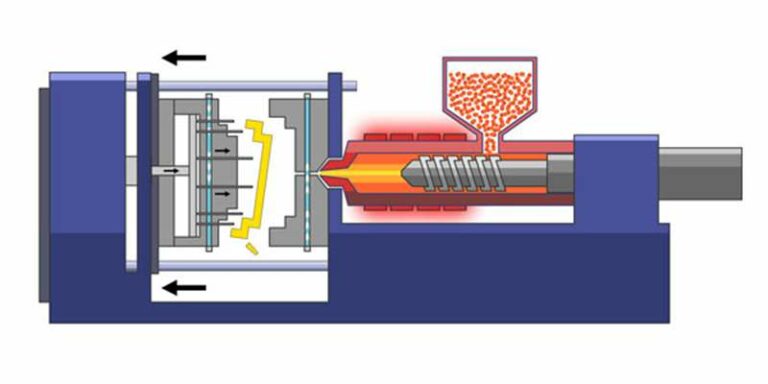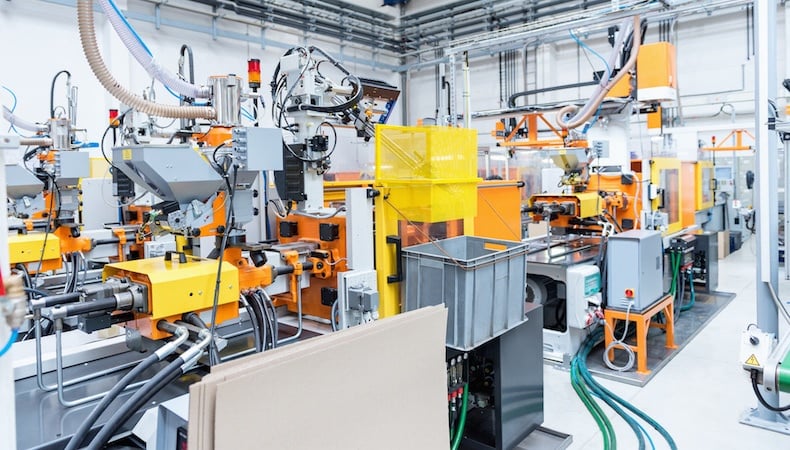The Impact of Plastic Injection Molding on Reducing Production Prices and Waste
The Impact of Plastic Injection Molding on Reducing Production Prices and Waste
Blog Article
The Future of Plastic Injection Molding: Developments and trends to View
As the plastic injection molding industry develops, a number of essential patterns are emerging that promise to improve its landscape. Automation and wise manufacturing techniques are readied to enhance efficiency, while the shift in the direction of sustainable materials mirrors a growing environmental awareness. Additionally, innovations in 3D printing are leading the way for unmatched layout adaptability. These developments likewise bring forth difficulties that need cautious factor to consider. Comprehending exactly how these components will engage and influence future techniques is crucial for stakeholders seeking to navigate this transformative duration effectively.
Automation and Smart Manufacturing
As the plastic shot molding industry progresses, automation and smart production are taking center phase, transforming manufacturing processes - Plastic Injection Molding. The assimilation of advanced innovations such as robotics, IoT (Internet of Things), and fabricated intelligence is allowing manufacturers to boost efficiency, decrease functional costs, and boost product top quality. Automated systems improve workflows, decreasing manual treatment and raising throughput, which is essential in satisfying the climbing need for quick manufacturing cycles
Smart manufacturing innovations assist in real-time monitoring and information analysis, enabling business to optimize equipment performance and predict maintenance demands. This positive method not only lessens downtime but also prolongs the life-span of tools. Additionally, the use of joint robotics, or cobots, enhances the adaptability of assembly line, making it possible for makers and employees to operate side by side securely and effectively.
The fostering of automation in plastic injection molding is not merely a fad but a tactical crucial for businesses aiming to stay affordable in an international market. By harnessing these technologies, suppliers can attain higher accuracy, lower waste, and adjust promptly to changing customer demands, placing themselves for lasting development in a significantly automated future.
Sustainable Products and Practices
The push in the direction of automation and wise manufacturing has actually led the means for a better focus on sustainable materials and techniques within the plastic shot molding market. Firms are significantly seeking eco-friendly alternatives to traditional petroleum-based plastics, resulting in the adoption of recycled and bio-based materials. These lasting materials not only reduce environmental impact however also align with customer need for greener items.

Furthermore, cooperation in between producers, product suppliers, and environmental organizations is cultivating advancement in the growth of sustainable materials that fulfill performance standards without jeopardizing quality. As laws around plastic use come to be more stringent, the market is positioned to adjust by embracing these sustainable methods, making certain long-term viability and lowering dependence on non-renewable resources. The integration of sustainability right into plastic shot molding is not merely a fad; it is becoming a crucial component of company obligation and functional quality.
Advances in 3D Printing
Current innovations in 3D printing technology are substantially changing the landscape of plastic injection molding. Difficult or when difficult to achieve through traditional methods, the integration of additive production procedures allows for the rapid prototyping of complex geometries that were. This ability not just speeds up product advancement cycles however likewise lowers material waste, lining up with the growing demand for lasting production methods
Moreover, the emergence of hybrid manufacturing strategies, which integrate 3D printing and injection molding, provides manufacturers the capacity to create detailed designs while keeping the check my reference efficiency of automation. This technique allows the manufacturing of tailored components tailored to certain client demands without giving up the rate and scalability that injection molding supplies.
Additionally, innovations in materials, such as high-performance polymers and composites particularly made for 3D printing, are enhancing the practical capacities of published components. These materials can endure better stress and exhibit enhanced thermal buildings, making them suitable for even more requiring applications.
As 3D printing continues to develop, its combination into plastic injection molding processes guarantees to enhance efficiency, reduce expenses, and foster development in product design, placing producers to better fulfill the challenges of a competitive market.
Data Analytics and IoT Assimilation
Data analytics and the combination of the Internet of Things (IoT) are transforming plastic injection molding by giving producers with extraordinary insights into their procedures. By leveraging real-time information gathered from interconnected machines and sensors, producers can monitor performance metrics, determine inadequacies, and enhance manufacturing procedures. This data-driven strategy promotes predictive upkeep, decreasing downtime and expanding tools life expectancy.
Furthermore, IoT assimilation enables boosted quality assurance. By constantly tracking variables such as temperature, pressure, and cycle times, suppliers can swiftly Check This Out detect discrepancies from established parameters and make adjustments in actual time. This not just enhances item consistency yet additionally minimizes waste and scrap prices.
The combination of data analytics and IoT technologies likewise empowers producers to embrace even more active production methods. With accessibility to thorough data analytics, organizations can respond to market demands with better flexibility, readjusting production timetables and setups as required. This adaptability is crucial in a quickly transforming production landscape.

Customization and Design Flexibility
How can modification and design flexibility boost the competitiveness of plastic shot molding? In a significantly visit site diverse market, the capability to provide tailored services is critical. Personalization allows suppliers to satisfy specific customer requirements, suiting special measurements, shapes, and capabilities that standard items may not satisfy. This versatility not just promotes client loyalty however likewise opens up avenues for brand-new business chances across different markets, from automobile to consumer goods.
Innovations in design technologies, such as computer-aided style (CAD) and rapid prototyping, additional bolster this trend. These devices make it possible for designers to develop elaborate patterns and intricate geometries, which can be perfectly incorporated into the manufacturing process. Therefore, manufacturers can respond promptly to changing customer choices and market needs.
Furthermore, the implementation of modular tooling systems boosts design flexibility, permitting quicker adjustments in between various product layouts without comprehensive downtime. This versatility can result in lowered lead times and reduced production expenses, making firms more agile and affordable. Inevitably, welcoming personalization and design versatility in plastic shot molding not just elevates item offerings however also strengthens market positioning in an ever-evolving landscape.
Final Thought
The future of plastic injection molding is characterized by considerable advancements in automation, lasting practices, and innovative products. The assimilation of IoT and information analytics will enhance operational performance and anticipating maintenance. Moreover, the adoption of recycled and bio-based materials, along with development in 3D printing, will cultivate sustainability within the market. Modification via modular tooling and fast prototyping will make it possible for makers to continue to be responsive and competitive to the dynamic needs of the marketplace.

The future of plastic shot molding is identified by substantial advancements in automation, sustainable practices, and ingenious materials.
Report this page